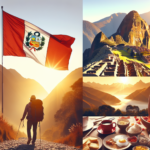Cusco, Peru Travel Guide
Cusco, the historic capital of Peru, is a vibrant city that offers a unique blend of ancient Incan heritage and colonial Spanish architecture, making it a prime destination for travelers seeking cultural richness. Known as the gateway to Machu Picchu, Cusco is filled with breathtaking landscapes, archaeological wonders, and an array of local experiences. Whether you’re wandering through the Sacred Valley or exploring the bustling markets, you’ll discover why this region is so cherished by tourists from around the world.
When is the best time to visit Peru?
Cusco’s rich tapestry of history and culture is complemented by its stunning natural attractions. The city is surrounded by beautiful mountains and the Sacred Valley, offering numerous opportunities for outdoor adventures such as hiking, mountain biking, and exploring the rich biodiversity of the region. Additionally, the city itself is home to remarkable historical landmarks, including the iconic Sacsayhuamán fortress and the intricate Temple of the Sun (Qorikancha).
When planning your visit, it’s essential to understand the seasonal variations that can affect your experience. The weather in Cusco can vary significantly, with temperatures averaging between 1°C to 19°C during the dry season and 4°C to 17°C during the rainy season from November to March. Rainfall peaks in February, while the dry season sees minimal precipitation, making it the prime time for trekking and exploration.
Tourist Seasons
- Peak Season: May to September is the busiest time for tourists, coinciding with the dry season and various festivals, including Inti Raymi in June.
- Mid Season: April and October witness fluctuating tourist numbers, with pleasant weather making them ideal for travel without the crowds.
- Valley Season: November to March marks the rainy season, with fewer tourists, especially in February due to heavy rainfall.
Weather Conditions & Seasonal Changes
During the dry season, visitors can expect warm days and cool nights, with average temperatures ranging from 10°C to 20°C. Rainfall is minimal, averaging less than 10 mm per month. In contrast, the rainy season brings an increase in precipitation, with January and February experiencing up to 200 mm of rainfall, leading to muddy trails and potential disruptions.
Special Festivities & Events
- Inti Raymi: Celebrated in June, this Festival of the Sun showcases traditional Incan ceremonies and attracts numerous visitors.
- Qoyllur Rit’i: A pilgrimage held in May, drawing thousands to the Sinakara Valley.
- Peruvian Independence Day: Celebrated on July 28, featuring parades and cultural displays across the city.
- Dia de los Muertos: Celebrated in early November, this event honors the deceased with altars and festivities.
- Fiesta de la Candelaria: A vibrant festival in February, showcasing traditional music and dance, especially in nearby Puno.
In conclusion, the best time to travel to Cusco is undoubtedly during the dry season from May to September, when you can fully immerse yourself in the beauty and culture of this iconic destination. Embrace the adventure that awaits you in the heart of the Andes!


